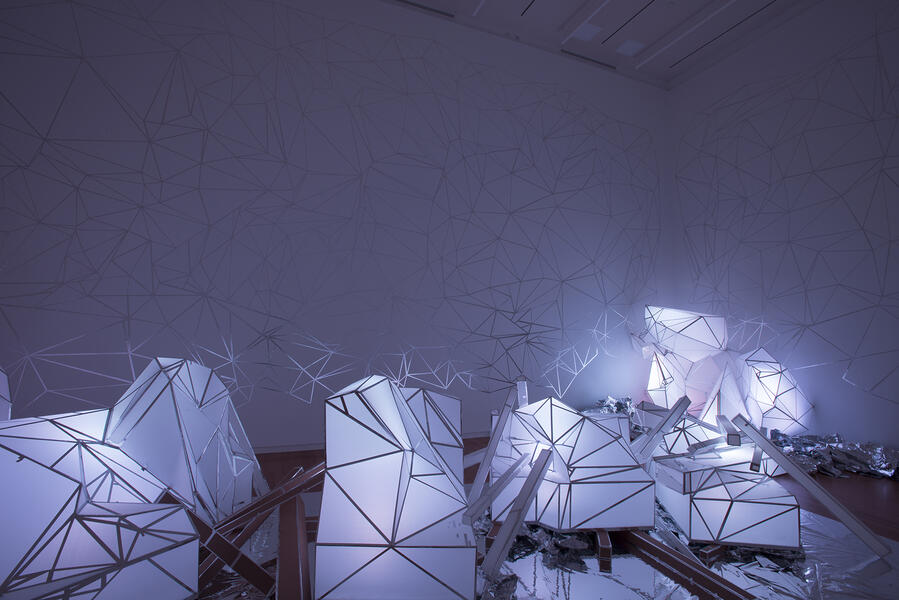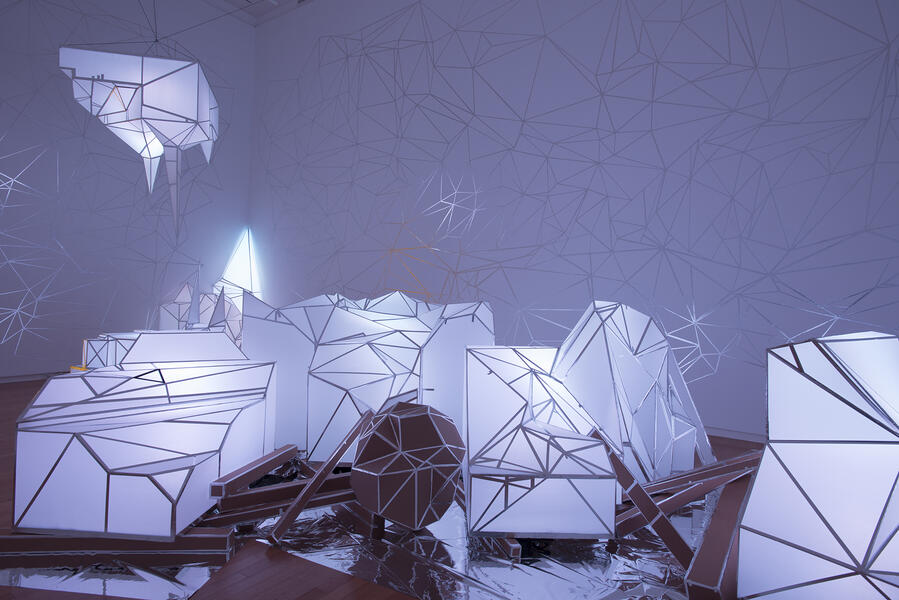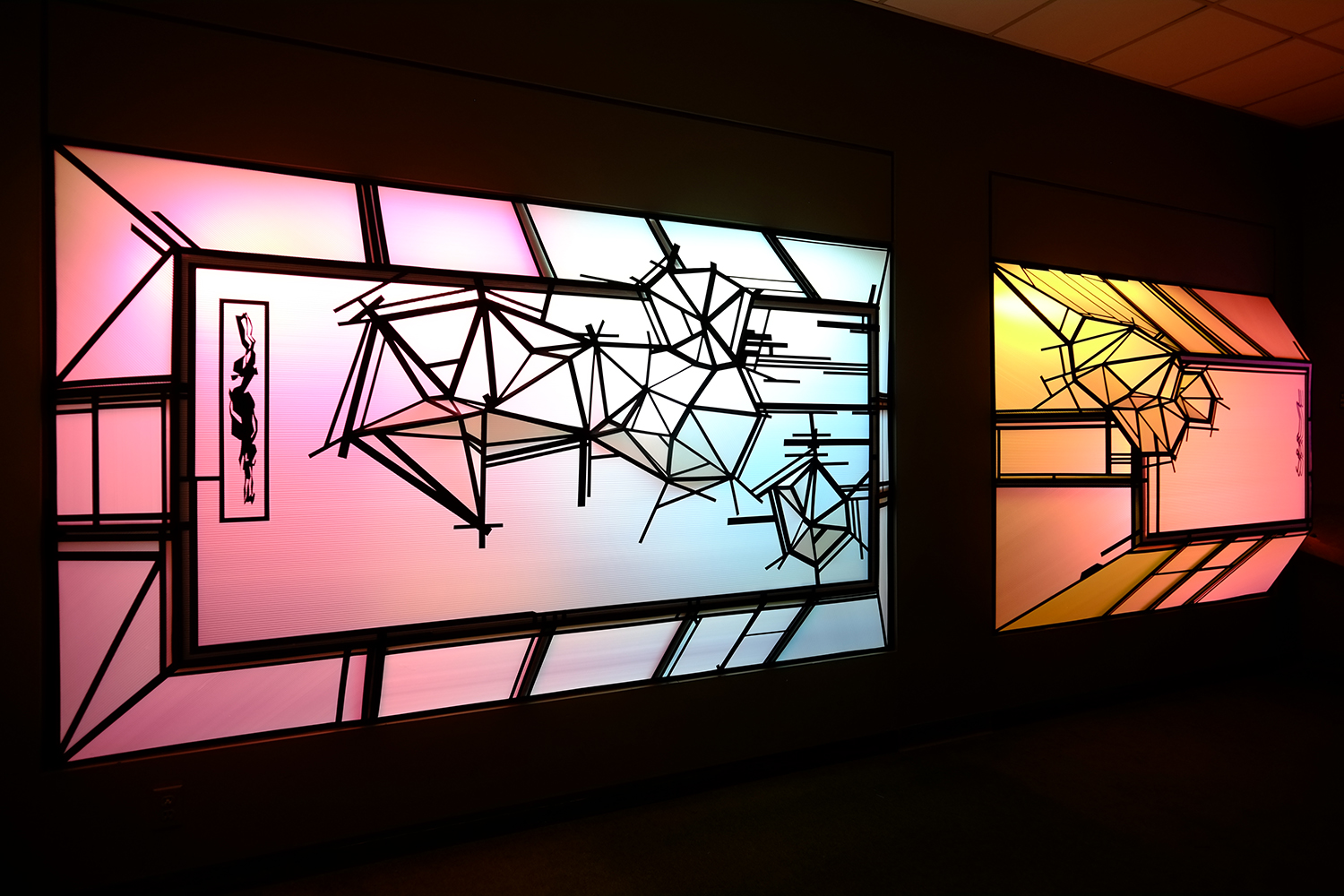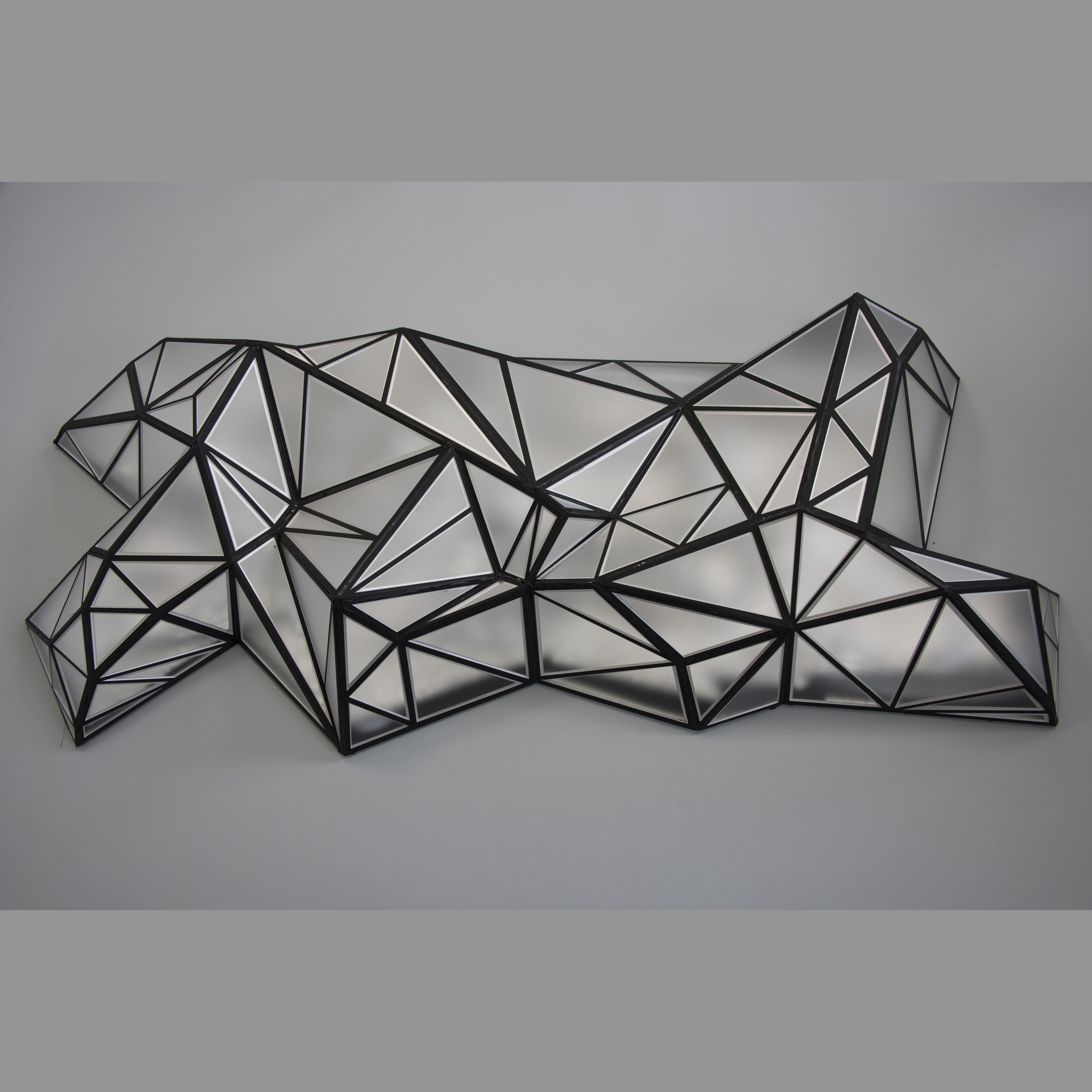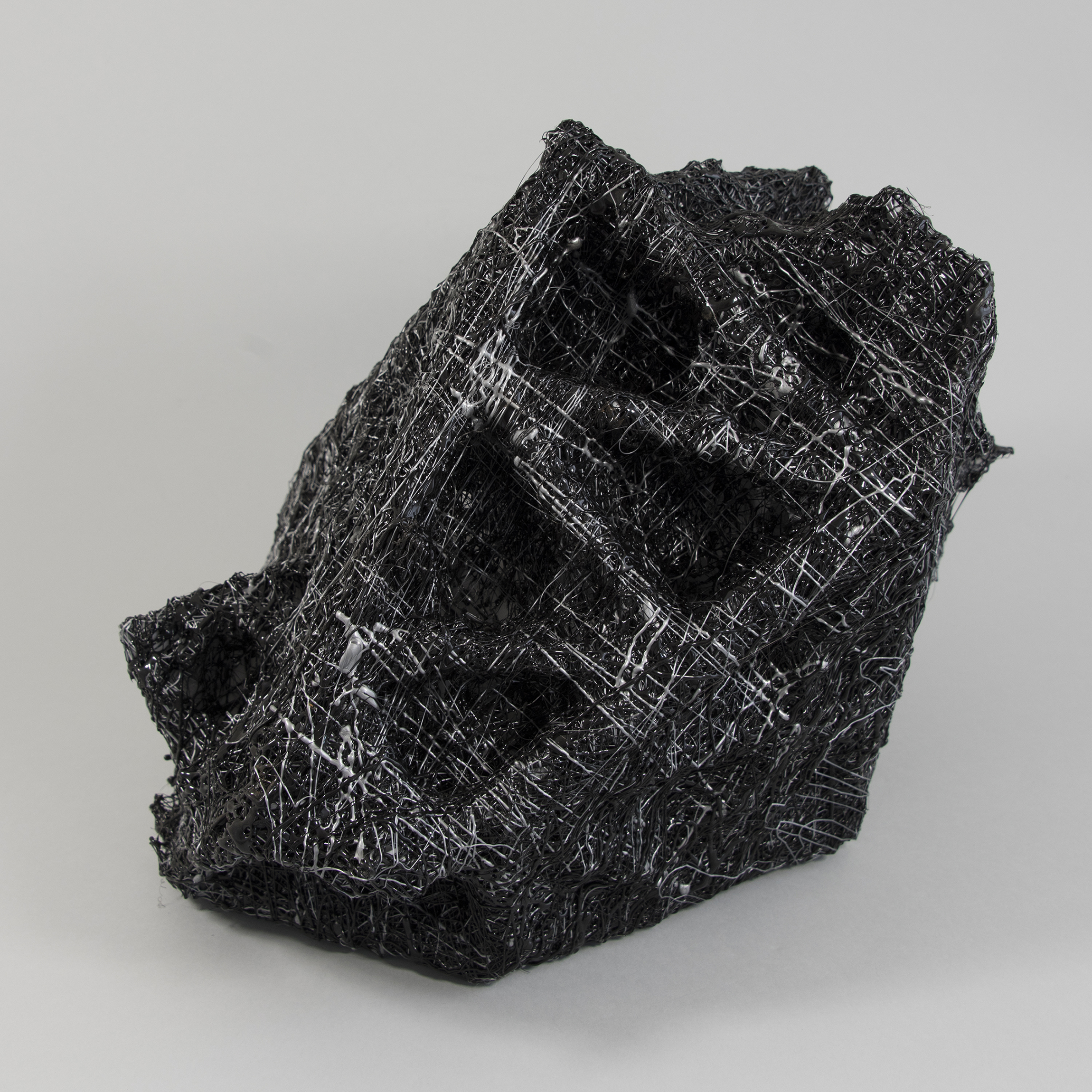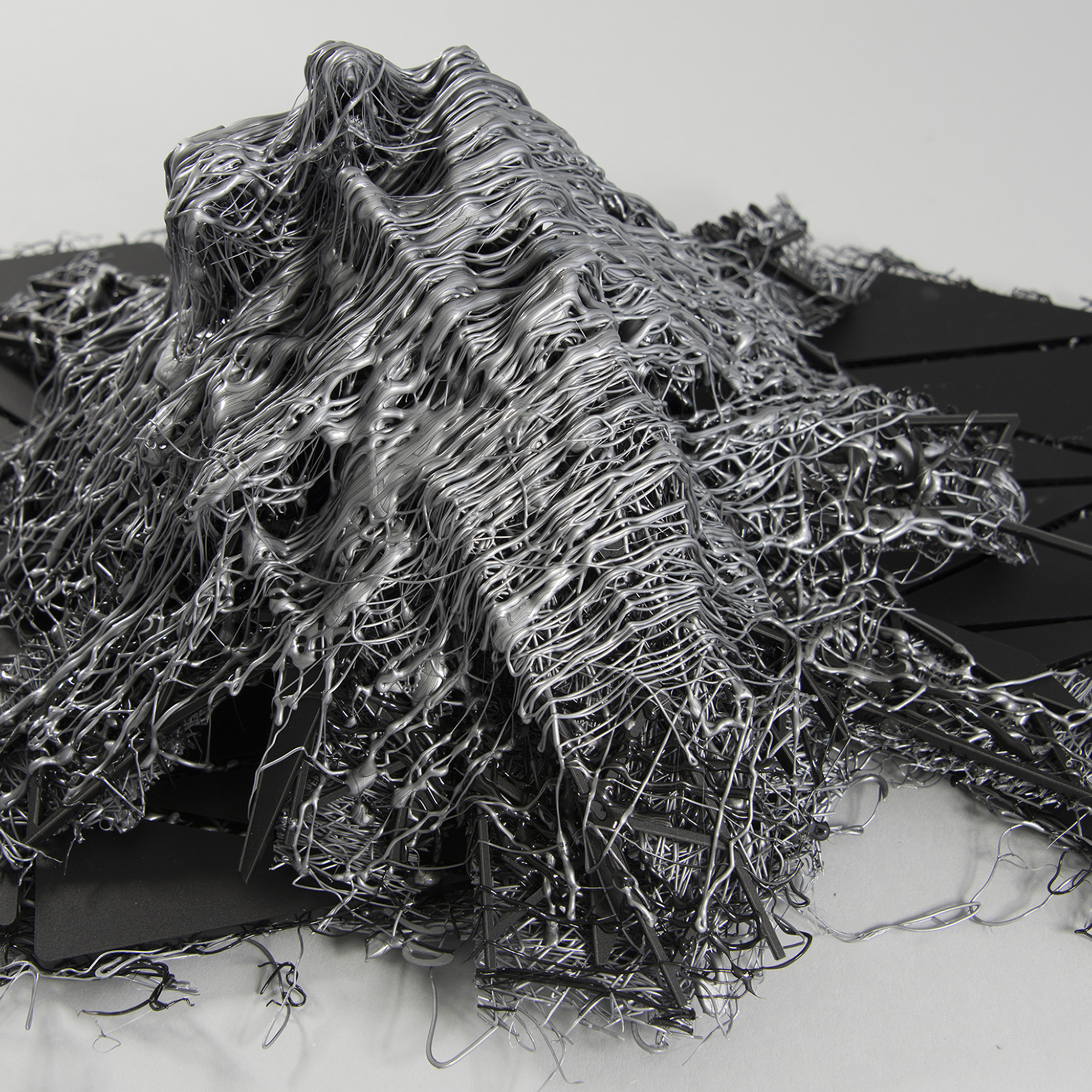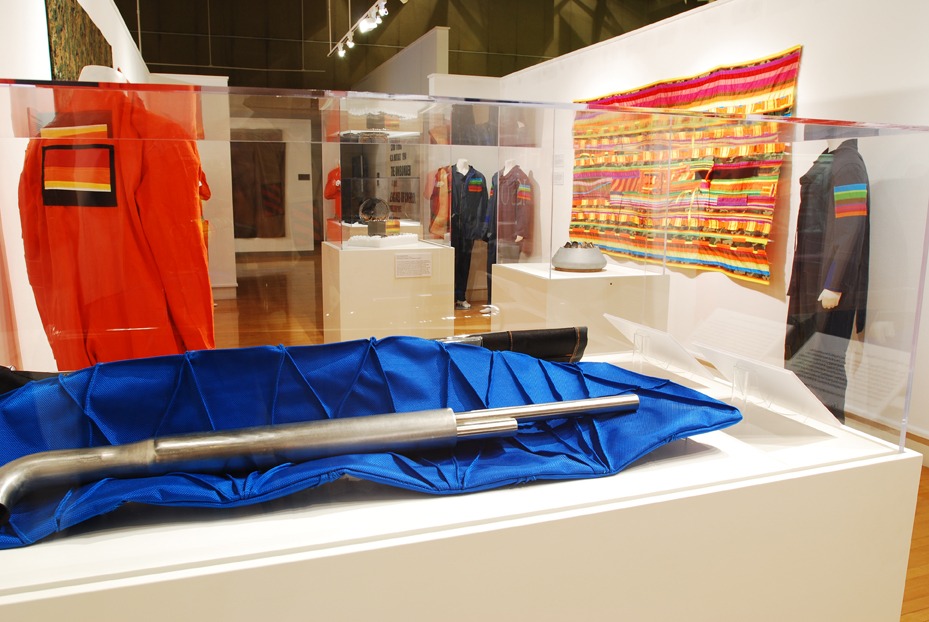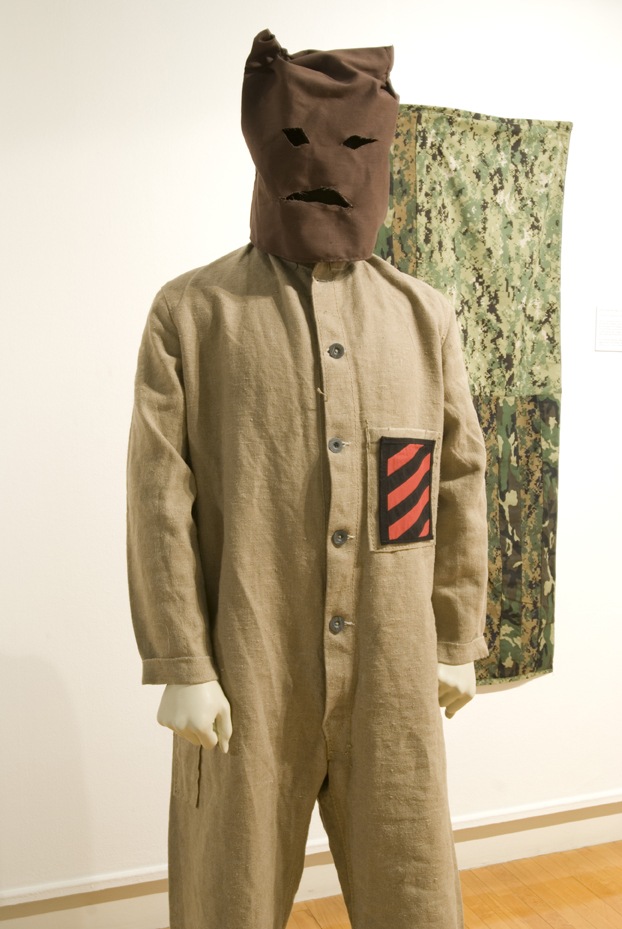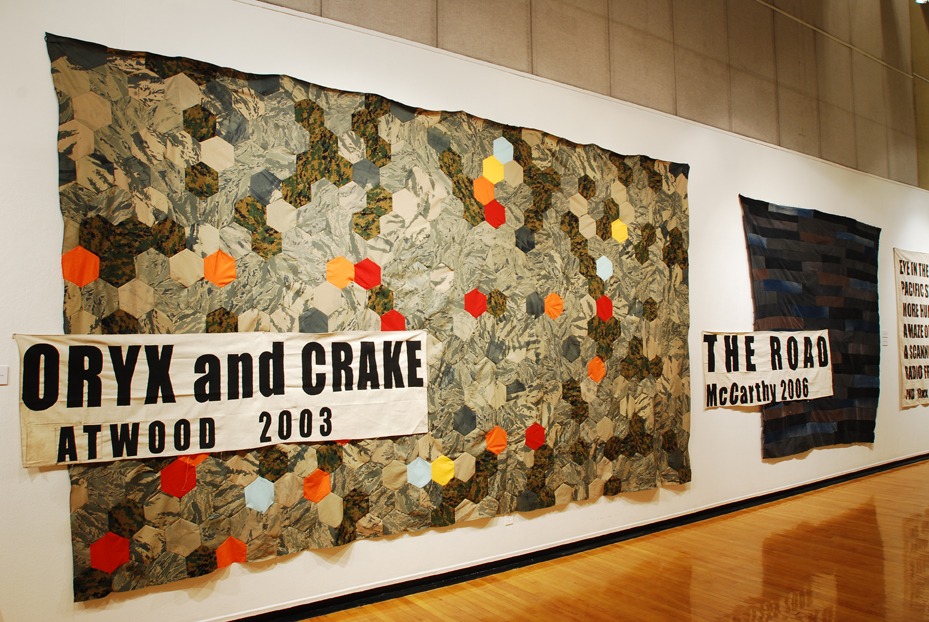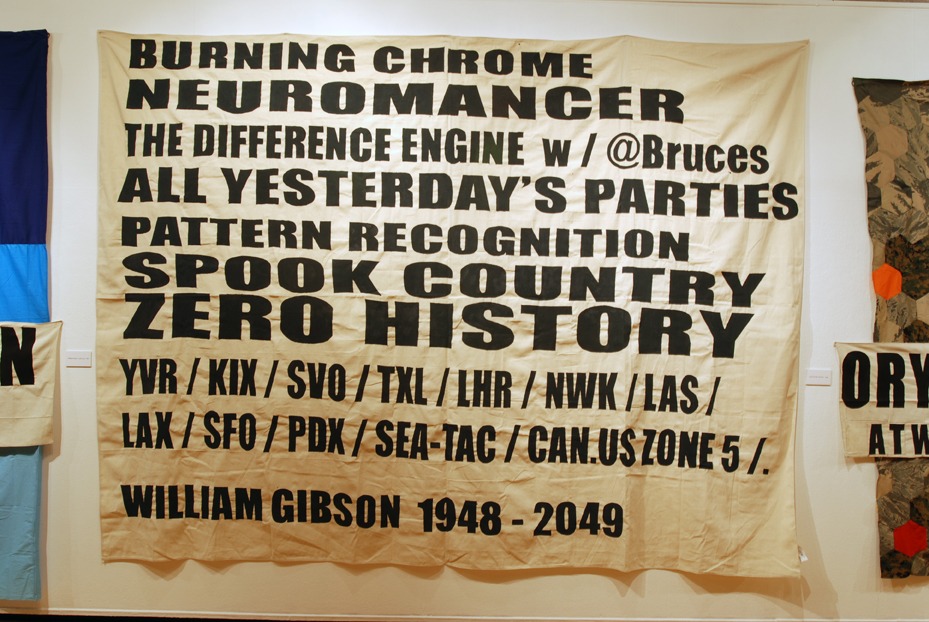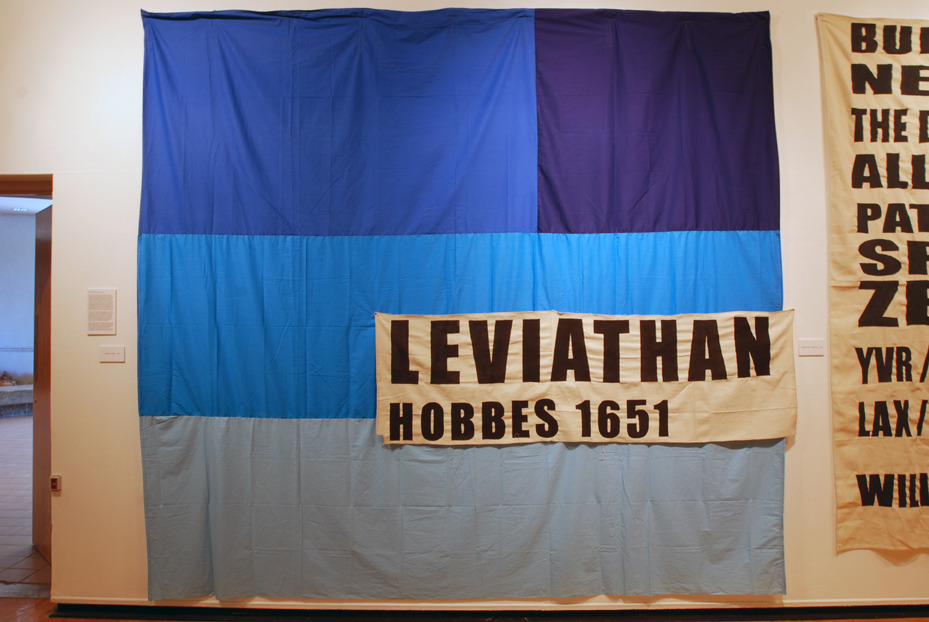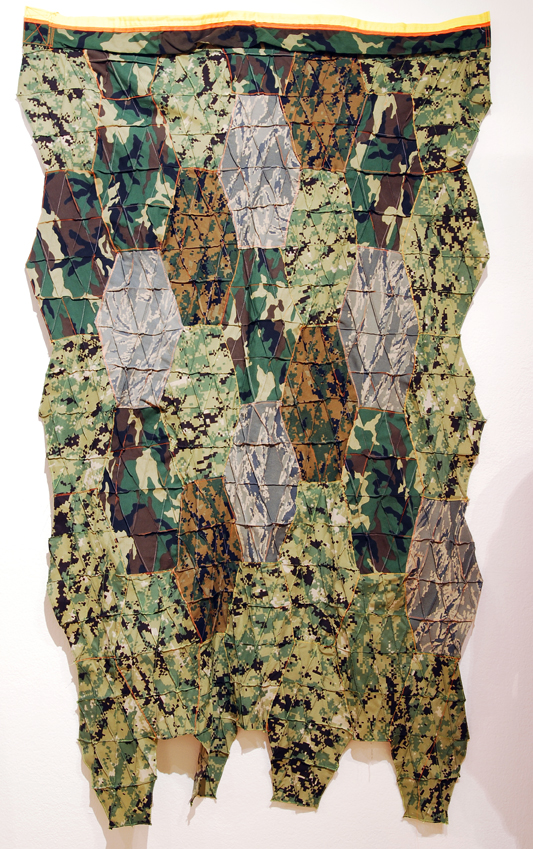About Stephen
Baltimore City
Stephen Hendee is a sculptor who builds objects inspired by digital culture, speculative fiction, and architecture. His work has been exhibited at MOMA/ PS.1 Contemporary Art Center, The New Museum for Contemporary Art, SculptureCenter, and The Whitney Museum Of American Art. Recent awards include a 2017 Maryland State Art Council Artist Award in Sculpture/Installation, a National Endowment for the Arts grant in 2019, and a HEMI research fellowship at Johns Hopkins University in 2021.
Jump to a project:
Climbing into the Dark
Mixed media modular installation
-
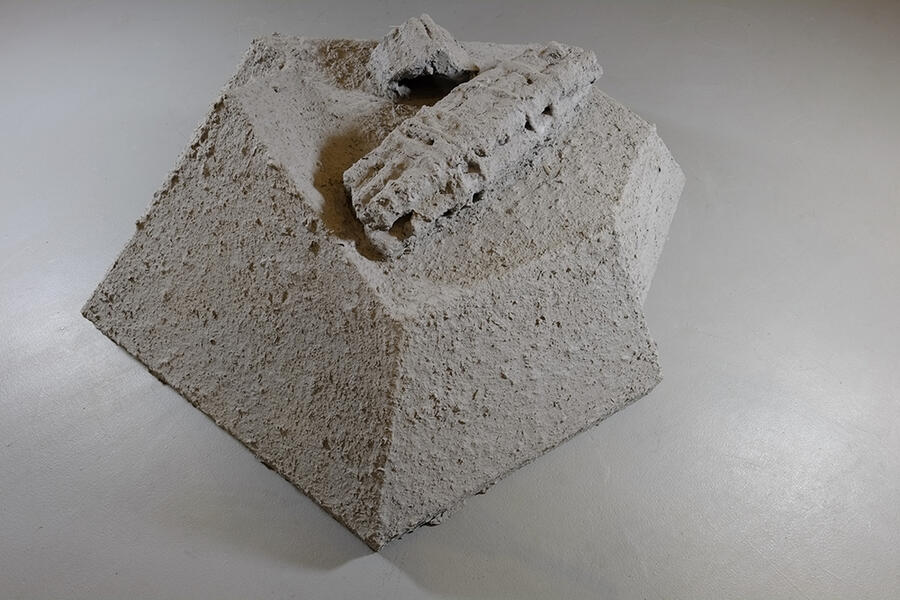 Climbing Into the Dark (Component) 2016Climbing Into the Dark (Component) 2016 20"x 24"x 18" plywood, paint, debris
Climbing Into the Dark (Component) 2016Climbing Into the Dark (Component) 2016 20"x 24"x 18" plywood, paint, debris -
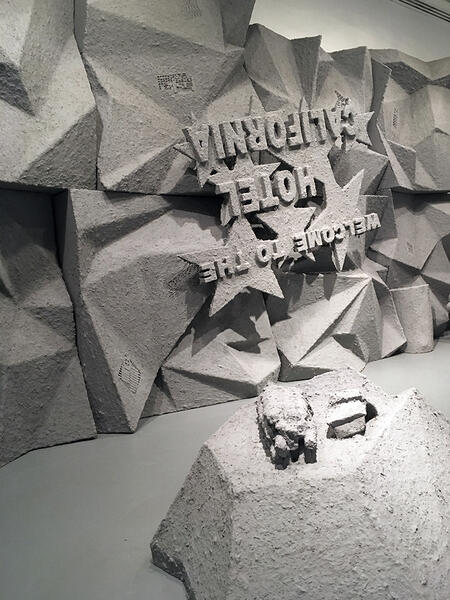 Climbing Into the Dark 2016Climbing Into the Dark 2016 96"x 192"x 24" plywood, paint, foam, debris
Climbing Into the Dark 2016Climbing Into the Dark 2016 96"x 192"x 24" plywood, paint, foam, debris -
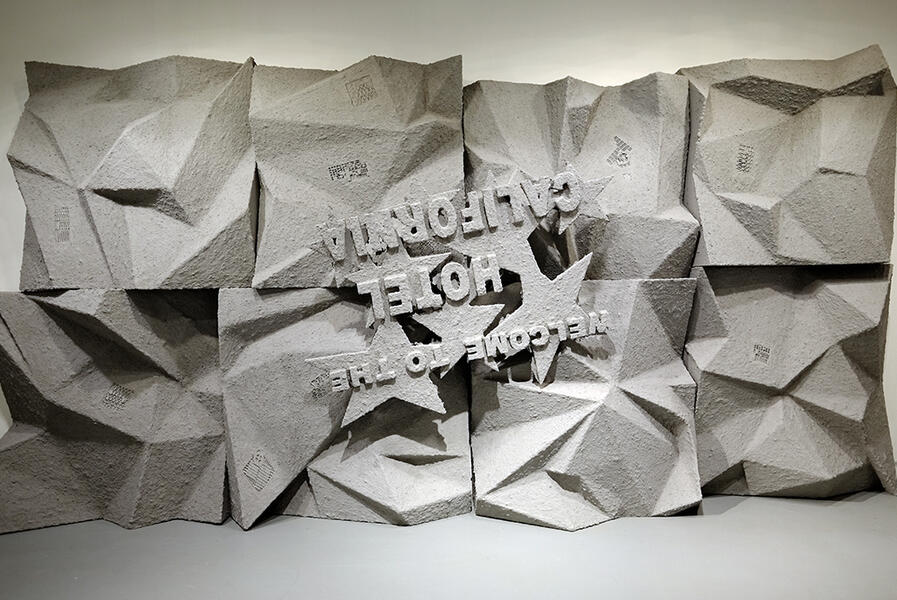 Climbing Into the Dark 2016Climbing Into the Dark 2016 96"x 192"x 24" plywood, paint, foam, debris
Climbing Into the Dark 2016Climbing Into the Dark 2016 96"x 192"x 24" plywood, paint, foam, debris
The Last People
Installation @Site:Lab
The Public Museum, Grand Rapids MI
-
 The Last People 2013The Last People 2013 Polypropylene, optical tape, fluorescent lights, gels @Site:Lab The Public Museum, Grand Rapids MI
The Last People 2013The Last People 2013 Polypropylene, optical tape, fluorescent lights, gels @Site:Lab The Public Museum, Grand Rapids MI -
 The Last People 2013The Last People 2013 Polypropylene, optical tape, fluorescent lights, gels @Site:Lab The Public Museum, Grand Rapids MI
The Last People 2013The Last People 2013 Polypropylene, optical tape, fluorescent lights, gels @Site:Lab The Public Museum, Grand Rapids MI -
 The Last People 2013The Last People 2013 Polypropylene, optical tape, fluorescent lights, gels @Site:Lab The Public Museum, Grand Rapids MI
The Last People 2013The Last People 2013 Polypropylene, optical tape, fluorescent lights, gels @Site:Lab The Public Museum, Grand Rapids MI -
 The Last People 2013The Last People 2013 Polypropylene, optical tape, fluorescent lights, gels @Site:Lab The Public Museum, Grand Rapids MI
The Last People 2013The Last People 2013 Polypropylene, optical tape, fluorescent lights, gels @Site:Lab The Public Museum, Grand Rapids MI -
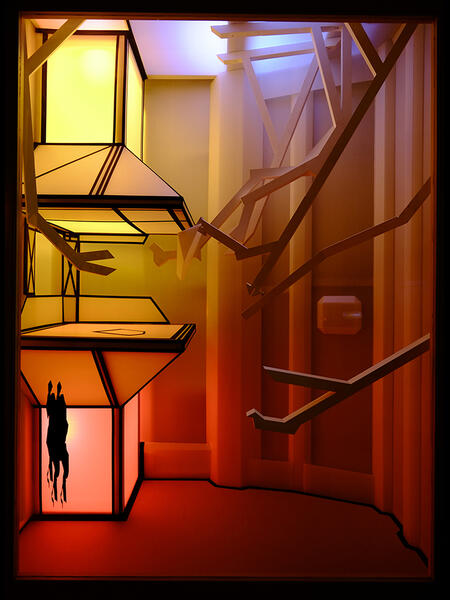 The Last People 2013The Last People 2013 Polypropylene, optical tape, fluorescent lights, gels @Site:Lab The Public Museum, Grand Rapids MI
The Last People 2013The Last People 2013 Polypropylene, optical tape, fluorescent lights, gels @Site:Lab The Public Museum, Grand Rapids MI -
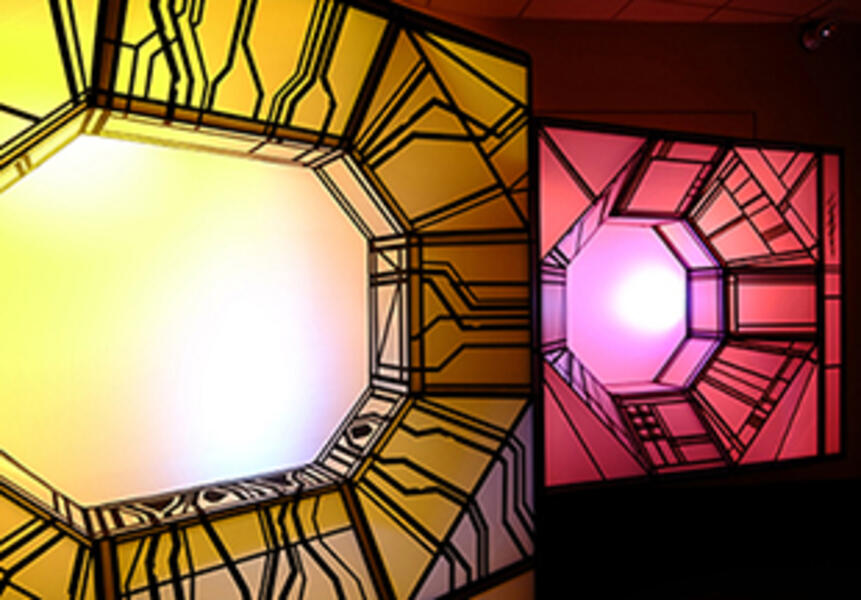 The Last People 2013The Last People 2013 Polypropylene, optical tape, fluorescent lights, gels @Site:Lab The Public Museum, Grand Rapids MI
The Last People 2013The Last People 2013 Polypropylene, optical tape, fluorescent lights, gels @Site:Lab The Public Museum, Grand Rapids MI -
 The Last People 2013The Last People 2013 Polypropylene, optical tape, fluorescent lights, gels @Site:Lab The Public Museum, Grand Rapids MI
The Last People 2013The Last People 2013 Polypropylene, optical tape, fluorescent lights, gels @Site:Lab The Public Museum, Grand Rapids MI
Digitally emergent sculpture
Sculptures utilizing inlay and sub-structured accumulations
-
Monarch 2017Monarch (2017) acrylic, metal tape, glue 20”x 20”x 20”
-
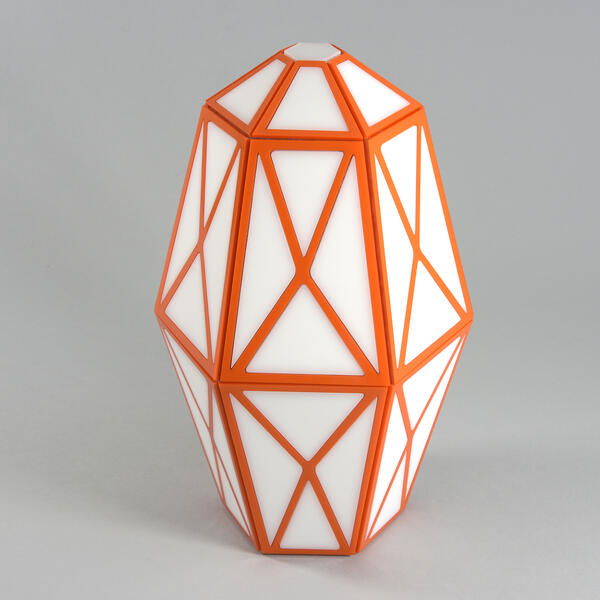 Vase 2017Vase (2017) acrylic, metal tape 12”x 7” x 7”
Vase 2017Vase (2017) acrylic, metal tape 12”x 7” x 7” -
 Corpse 2017Corpse 2017 acrylic, metal tape, glue 42” x 28” x 10”
Corpse 2017Corpse 2017 acrylic, metal tape, glue 42” x 28” x 10” -
 Charred (2017)Charred (2017) acrylic, glue 20” x 20” x 16”
Charred (2017)Charred (2017) acrylic, glue 20” x 20” x 16” -
 Frond 2017Frond 2017 acrylic, glue 10” x 6” x 10”
Frond 2017Frond 2017 acrylic, glue 10” x 6” x 10” -
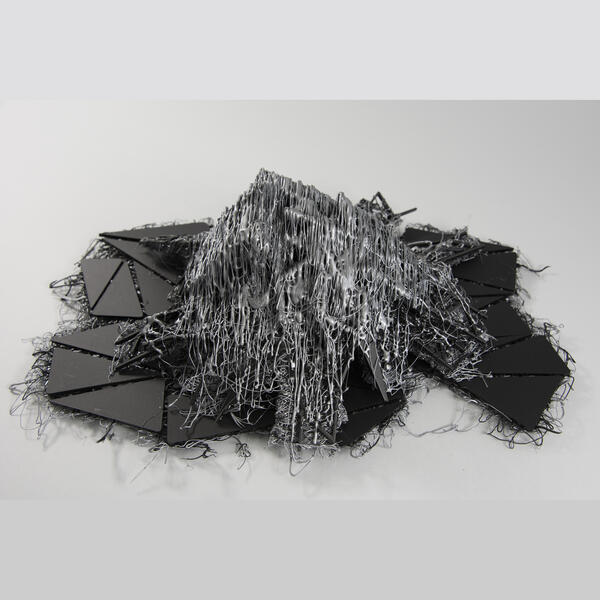 Frond 2017Frond 2017 acrylic, glue 10” x 6” x 10”
Frond 2017Frond 2017 acrylic, glue 10” x 6” x 10” -
 Free Form 2016Free Form 2016 acrylic, metal tape, silicone each 12"x 8"x 10"
Free Form 2016Free Form 2016 acrylic, metal tape, silicone each 12"x 8"x 10"
Textiles and Artifacts from Dark age North America (2026-2280)
"Textiles and Artifacts from Dark age North America (2026-2280)" is a world building, speculative exhibition of textiles and crafts from our near future. In this imagined future, the world economy has collapsed because of a recognized threat to global power systems. As the threat is ignored by industrialized nations, the events that unfold are depicted in textiles, clothing and artifacts, with explanatory panels providing a narrative of doom, social upheaval, and civilization’s eventual return. The deck of society is reshuffled and the new heroes who emerge tell unheard of stories of survival, presenting a struggle for equality and power that many will understand.
The objects that comprise this ongoing traveling exhibition project from 2010-2016 cover 40 individual works for display, including didactic text with the potential for performance and video components. An accompanying catalog is in the works.
The exhibition has been show thus far at: 2016 DEMO Project, Springfield, IL 2014 Mercer College Art Gallery, MCCC, Trenton, NJ 2012 SiTE:LAB @ the Grand Rapids Public Museum, MI 2010 The Barrick Museum, Las Vegas, NV
The objects that comprise this ongoing traveling exhibition project from 2010-2016 cover 40 individual works for display, including didactic text with the potential for performance and video components. An accompanying catalog is in the works.
The exhibition has been show thus far at: 2016 DEMO Project, Springfield, IL 2014 Mercer College Art Gallery, MCCC, Trenton, NJ 2012 SiTE:LAB @ the Grand Rapids Public Museum, MI 2010 The Barrick Museum, Las Vegas, NV
-
 Dark Age North AmericaTHE 26TH MAYOR OF CHICAGO (2056-2210) This “Mayor of Chicago” is a scepter of power handed down from the first warlords. In the time since the chaos of the Fall, this symbolic cane has changed from its presence as an actual shotgun, to a more ceremonial but, just as deadly version of the shotgun design. Likewise, succession in the rule of City State Chicago has evolved from warlords vying for office through hand-to-hand combat in octagonal pits. In recent decades, a citizen democracy and small senate negotiate succession based on a more organized system of political regime. This artifact has been loaned by the current and 35th Mayor of Chicago, Ms.“Steady” Treset.
Dark Age North AmericaTHE 26TH MAYOR OF CHICAGO (2056-2210) This “Mayor of Chicago” is a scepter of power handed down from the first warlords. In the time since the chaos of the Fall, this symbolic cane has changed from its presence as an actual shotgun, to a more ceremonial but, just as deadly version of the shotgun design. Likewise, succession in the rule of City State Chicago has evolved from warlords vying for office through hand-to-hand combat in octagonal pits. In recent decades, a citizen democracy and small senate negotiate succession based on a more organized system of political regime. This artifact has been loaned by the current and 35th Mayor of Chicago, Ms.“Steady” Treset. -
 Dark Age North America
Dark Age North America -
Dark Age North AmericaTRICKSTER / CHAOS & PLENTY (ORANGE/ BLUE / STRIPES) As the warlords dissolved with the formation of the Authority, costumes representing the most fearsome of these unsettling archetypes made their way into community plays. At one time used by the warlords to entertain coercion from weary travelers, they also were used to hide the identities of the criminals. In time, these characters were used by the Authority to inform children of inherent dangers outside the protection of the community zones. Eventually these figures became an accepted and essential presence in birthing rituals, funerals, and field blessings, each with their own unique ritualized task integral to the narrative of the event.
-
 Dark Age North America
Dark Age North America -
 Dark Age North AmericaSTORYTELLER’S DROPS (2035-2250) Before the chaos, most of the world’s libraries and archives had been converted into digital formats. Paper books became antiquated and though cherished by many, the production and distribution of book editions had diminished to a trickle and completely ceased more than a decade before the disruption. It is obvious to us now during the event of 2026, we lost nearly the entirety of human historical record. It was no small tragedy that most print paper had already become uncommon, but compounding this problem the electricity used to run all other informational archives both public and personal disappeared almost overnight. Unaware of the scope of the unfolding events anything that could be burned for warmth or cooking was used for survival, including most of the remaining books and paper. For as many who wandered looking simply for food and clean water there were as many in shock that their lives, location, and history had been erased. Individuals and then groups became recognized for their ability to remember and re-record the history of collective memory among the survivors. Traveling storytellers became an instrumental part of community life. The arrival of those reciting their personal and handed down memories was met with excitement and anticipation. Many storytellers would travel with lightweight banners often painted with a list of authors or stories they were keen to perform. Sometimes these selections were an assortment of fragmentary works, with others the oeuvre of specific authors might be the focus, or single works of literature that would be recited over many nights. Central meeting places became a social hub of storytelling, music, shared communal knowledge, and history.
Dark Age North AmericaSTORYTELLER’S DROPS (2035-2250) Before the chaos, most of the world’s libraries and archives had been converted into digital formats. Paper books became antiquated and though cherished by many, the production and distribution of book editions had diminished to a trickle and completely ceased more than a decade before the disruption. It is obvious to us now during the event of 2026, we lost nearly the entirety of human historical record. It was no small tragedy that most print paper had already become uncommon, but compounding this problem the electricity used to run all other informational archives both public and personal disappeared almost overnight. Unaware of the scope of the unfolding events anything that could be burned for warmth or cooking was used for survival, including most of the remaining books and paper. For as many who wandered looking simply for food and clean water there were as many in shock that their lives, location, and history had been erased. Individuals and then groups became recognized for their ability to remember and re-record the history of collective memory among the survivors. Traveling storytellers became an instrumental part of community life. The arrival of those reciting their personal and handed down memories was met with excitement and anticipation. Many storytellers would travel with lightweight banners often painted with a list of authors or stories they were keen to perform. Sometimes these selections were an assortment of fragmentary works, with others the oeuvre of specific authors might be the focus, or single works of literature that would be recited over many nights. Central meeting places became a social hub of storytelling, music, shared communal knowledge, and history. -
 Dark Age North America
Dark Age North America -
 Dark Age North America
Dark Age North America -
 Dark Age North AmericaBATTLE FLAG / WARLORD ERA The people who became warlords were on top of the world just as it ended for completely random reasons. You might have been one if you were in their shoes at that moment. It was as though the world was one big musical chair game with only a few chairs left, the music stopped and a handful of the luckiest and toughest ruled the land for a short intense moment. Urban centers were a different matter altogether, where the influence of the warlords never left. Warlords were often those who had direct access to supplies, weapons, or had hoarded resources for trade. They directed underlings to search the land and cityscapes for what simple armed thieves or the starving near-cannibals had not yet consumed. The warlords built armies that took control of the roads for tolls, stripping small towns and their population of everything useful. As the world’s last electric gasps allowed them, they ran high-octane super-charged engines on open stretches of road in bizarre nihilistic jousting matches to the death. This battle flag might have been flown from the antenna of such a car, now rusted relics such as the Pontiac GTO, the Lincoln Continental and the Chevelle.
Dark Age North AmericaBATTLE FLAG / WARLORD ERA The people who became warlords were on top of the world just as it ended for completely random reasons. You might have been one if you were in their shoes at that moment. It was as though the world was one big musical chair game with only a few chairs left, the music stopped and a handful of the luckiest and toughest ruled the land for a short intense moment. Urban centers were a different matter altogether, where the influence of the warlords never left. Warlords were often those who had direct access to supplies, weapons, or had hoarded resources for trade. They directed underlings to search the land and cityscapes for what simple armed thieves or the starving near-cannibals had not yet consumed. The warlords built armies that took control of the roads for tolls, stripping small towns and their population of everything useful. As the world’s last electric gasps allowed them, they ran high-octane super-charged engines on open stretches of road in bizarre nihilistic jousting matches to the death. This battle flag might have been flown from the antenna of such a car, now rusted relics such as the Pontiac GTO, the Lincoln Continental and the Chevelle.



